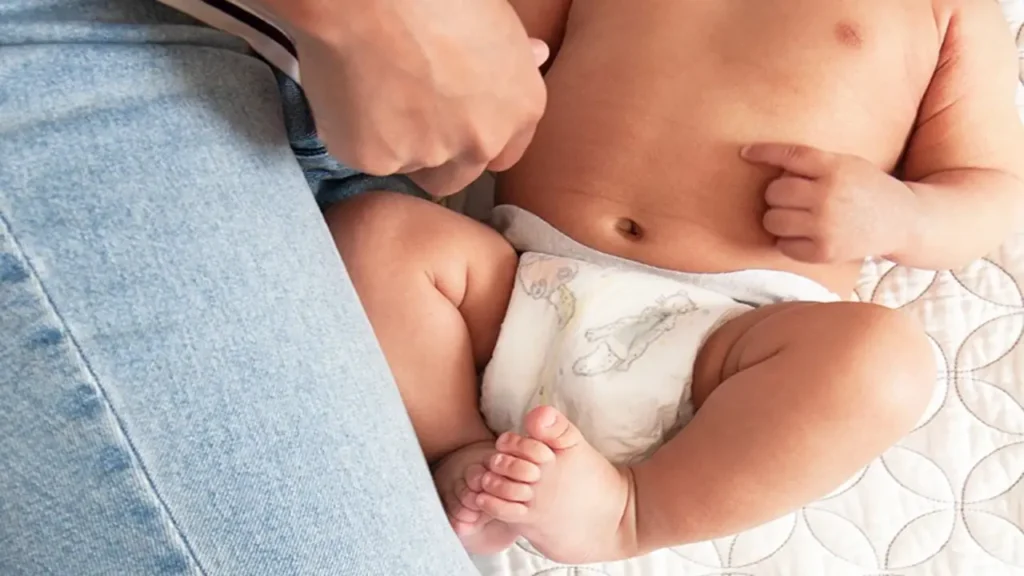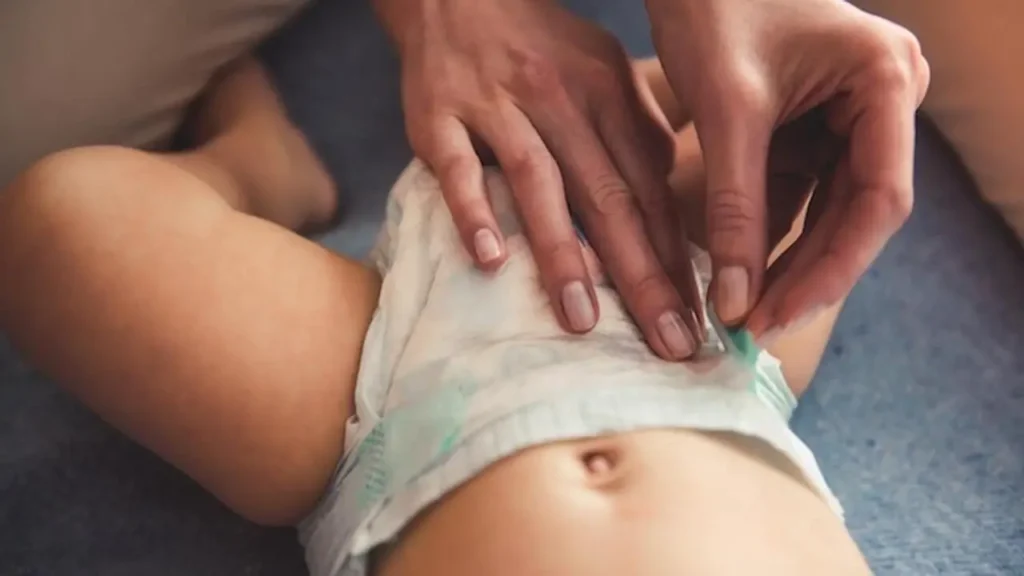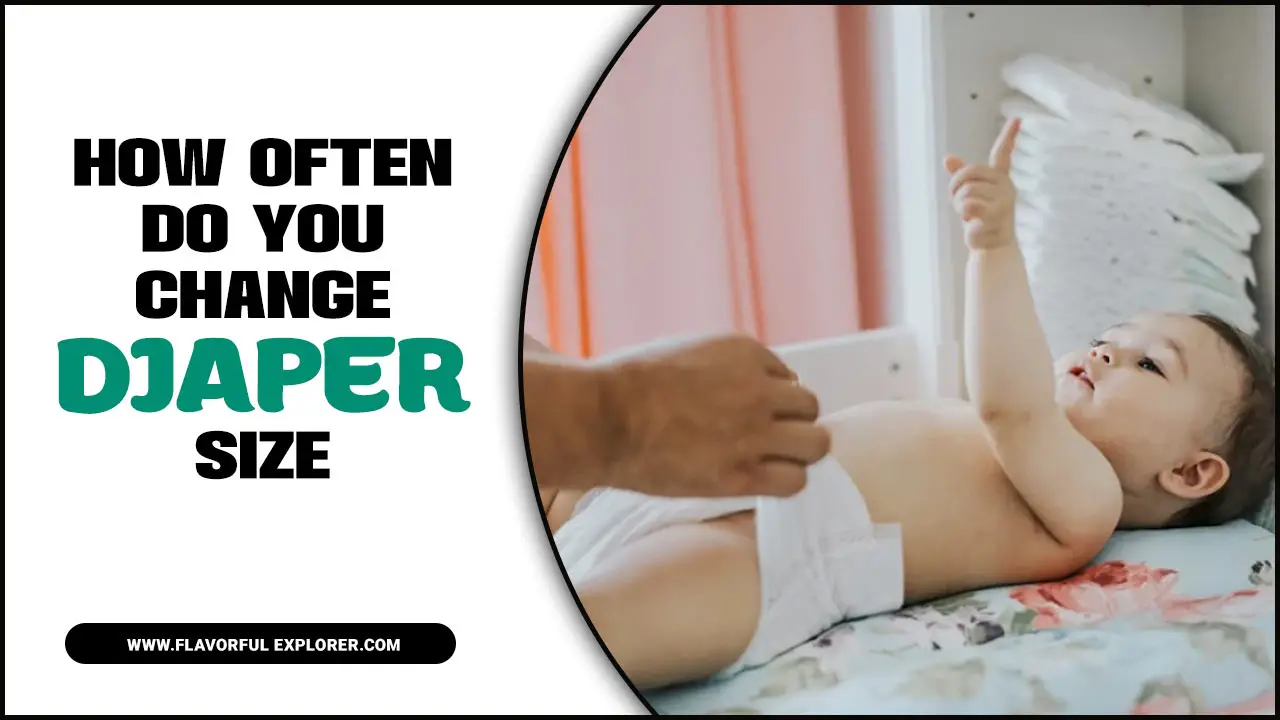Changing diapers is necessary for parents of infants and young children and can often feel like a never-ending cycle. As babies grow and develop, their diaper size must also be adjusted.
Determining when to move up to the next size can confuse and overwhelm new parents. With so many factors to consider, such as weight, age, and brand, knowing exactly how often to change diaper size can be challenging.
Here, we will discuss how often do you change diaper size and provide helpful tips to make this transition as smooth as possible. By understanding the signs to look for and having the proper knowledge, parents can ensure their little one stays comfortable and dry while avoiding unnecessary diaper mishaps.

Information On Diaper Size:
Diaper sizes refer to the weight range the diaper is designed to fit. The sizes can vary between different brands but generally follow a similar pattern. Here is a general guideline for diaper sizes based on weight:
- Newborn: Designed for babies weighing up to 10 pounds (4.5 kg).
- Size 1: Suitable for babies weighing 8-14 pounds (3.6-6.4 kg).
- Size 2: Designed for babies weighing 12-18 pounds (5.4-8.2 kg).
- Size 3: Suitable for babies weighing 16-28 pounds (7.3-12.7 kg).
- Size 4: Designed for babies weighing 22-37 pounds (10-16.8 kg).
- Size 5: Suitable for babies weighing 27 pounds (12.2 kg)
How Often Do You Change Diaper Size – Explain In Detail

Here is the answer how often do you change diaper size? It is important to consider the type of diaper used, whether reusable or disposable. Changing a baby’s diaper every 3 hours, give or take, is generally recommended. This regular changing routine helps to maintain the baby’s hygiene, prevent discomfort and irritation, and minimize the risk of diaper rash. However, it is important to note that this time frame may vary depending on the baby’s needs.
An average of 6 to 7 diapers per day is typically sufficient for larger babies to accommodate their urinary and bowel patterns. On the other hand, newborns may require slightly more frequent diaper changes due to their smaller bladder capacity and more frequent feedings. In the early infancy stages, it is not uncommon for newborns to soil their diapers after each feeding, resulting in more diaper changes per day.
Factors That Influence Diaper Size Changes
the type of diaper being used, and the baby’s weight. Babies grow at different rates, so it is important to regularly assess if the current diaper size is still a good fit. As babies gain weight, their diaper size may need to be increased to ensure a proper and comfortable fit.
Additionally, the type of diaper used can also impact how often diaper size changes are necessary. Some brands may have a wider range of sizes, allowing for a more tailored fit as the baby grows. Factors that Influence Diaper Size Changes:
- Age and Weight: Diaper sizes are typically determined based on the weight and age of the baby. Babies may need to switch to a larger diaper size to ensure proper fit and maximum absorbency as they grow and gain weight.
- Growth Rate: Some babies may have a faster or slower growth rate than others. If a baby grows quickly, they may need to move up to a larger diaper size sooner than expected. On the other hand, a slower growth rate may allow the baby to stay in a smaller diaper size for a longer period.
- Body Shape: Each baby has a unique body shape, which can affect the diaper’s fit. Some babies have chunkier thighs or a rounder belly, which may require a larger diaper size for a comfortable fit.
- Brand and Type of Diaper: Different diaper brands may have slightly different sizing guidelines. It’s important to follow the specific sizing recommendations provided by the diaper manufacturer
Tips For Properly Fitting Diapers

Properly Fitting Diapers are crucial for the comfort and well-being of your little one. As your baby grows, you may wonder how often you should change diaper sizes to ensure the perfect fit. The frequency of changing diaper sizes varies from baby to baby and depends on their growth rate. On average, babies tend to outgrow their diapers every few months, but it’s important to keep a close eye on their weight and waist size to determine when it’s time for a change.
Here are some tips for properly fitting diapers:
- Size selection: Choose the appropriate diaper size based on your baby’s weight and age. The diaper should fit snugly around the waist and legs without being too tight or loose.
- Waist fit: Adjust the diaper tabs symmetrically on both sides, ensuring they are securely fastened but not too tight. The waistband should sit comfortably around your baby’s waist without digging into the skin.
- Leg fit: Pull the diaper up between your baby’s legs and ensure the leg cuffs are properly positioned around the thighs. This helps prevent leaks and ensures a comfortable fit.
- Check for gaps: Run your fingers along the diaper’s leg cuffs and waistline to ensure no gaps or spaces. Gaps can lead to leakage, so make sure the diaper is snugly fitted.
Common Diaper Size Mistakes To Avoid
It is important to be aware of some common mistakes parents often make. One mistake to avoid is waiting too long to move up to the next diaper size. Babies grow rapidly, and their diaper needs change accordingly. If a diaper size is too small, it can cause discomfort and lead to leaks and blowouts. On the other hand, using a diaper size that is too big can also result in leaks and poor fit, making it less effective in containing messes. Common Diaper Size Mistakes to Avoid:
- Choosing the wrong size: One of the most common mistakes parents make is using the wrong size diaper for their baby. It’s important to follow the weight guidelines the diaper manufacturer provides to ensure a proper fit.
- Going too small: Using a too-small diaper can lead to discomfort for your baby and increase the risk of leaks and blowouts. Regularly check your baby’s weight and adjust the diaper size accordingly.
- Going too big: On the other hand, using a too-big diaper can also cause leaks and discomfort. A properly fitted diaper should snugly cover your baby’s bottom without leaving any gaps.
- Ignoring the diaper’s fit indicators: Many diaper brands have fit indicators that help parents determine if the diaper is the correct size. These indicators include stretchy waistbands or colour-changing lines. Pay attention to these indicators to ensure a proper fit.
Troubleshooting Diaper Size Issues

It’s important to monitor your baby’s growth and weight gain. As your little one grows, they may outgrow their current diaper size, requiring a switch to a larger size. It is recommended to check your baby’s weight regularly and consult the diaper size chart provided by the manufacturer to ensure the best fit. Here are some troubleshooting tips for diaper size issues:
- Check the weight range: Use the appropriate diaper size based on your baby’s weight. Diaper packages usually indicate the weight range for each size.
- Consider your baby’s shape: Every baby is different, so consider your baby’s body shape when selecting a diaper size. If you notice leaks or discomfort in certain areas, it may be a sign that you need to switch to a different size.
- Check the fit: Ensure the diaper fits snugly around your baby’s waist and thighs without being too tight or loose. If the diaper leaves red marks or gaps, it may be necessary to try a different size.
- Monitor absorbency: If your baby frequently experiences leaks or blowouts, it could mean that the diaper is not absorbing enough. In this case, you might need to switch to a larger size or try a different brand that offers better absorbency.
Transitioning To The Next Diaper Size
Transitioning to the next diaper size is important in ensuring your baby’s comfort and protection as they grow. The frequency at which you change diaper sizes can vary depending on your baby’s individual growth rate and weight. Generally, it is recommended to change diaper sizes when your baby’s current diapers become too snug or leak frequently. Here are some key points to consider:
- Signs that it’s time to switch: Keep an eye out for signs that your baby’s current diaper size is becoming too snug or causing leaks. These signs may include red marks on the baby’s skin, difficulty fastening the diaper tabs, or frequent leaks.
- Check the weight range: Each diaper size is designed to accommodate a specific weight range. Refer to the packaging or manufacturer’s guidelines to determine when to move to the next size. Generally, if your baby is reaching the upper weight limit of their current diaper size, it’s a good indication that it’s time to switch.
- Consider your baby’s body shape: Some babies may have different body shapes that make certain diaper sizes more suitable than others. If you notice that the current diaper size is consistently too tight around the waist or legs
Can I Change My Diaper Every 4 Hours?
One common question arises: “Can I change the diaper every 4 hours?” The answer to this question depends on various factors. Generally, changing a diaper every 2-3 hours for newborns and infants is recommended. However, as babies grow older and their bladder capacity increases, extending the duration between diaper changes is possible.
Changing a diaper every 4 hours may be suitable for older babies with a consistent eating and sleeping schedule. It is important to check the diaper frequently to ensure it is not soiled or overly wet. Leaving a dirty diaper on for an extended period can lead to discomfort and diaper rash. Also, some babies may have more sensitive skin and require more frequent diaper changes to prevent irritation.
Should I Change My Diaper Every 2 Hours?

One common question that many new parents have is, “Should I change my baby’s diaper every 2 hours?” The answer to this question depends on a few factors. Firstly, it is important to consider the age of your baby.
Newborns tend to have more frequent bowel movements, so changing their diaper every 2 hours may be necessary to keep them clean and prevent diaper rash. As your baby grows, their bowel movements may become less frequent, and you may not need to change their diaper as often. Additionally, it is essential to observe your baby’s comfort level.
If they show signs of discomfort, such as fussiness or irritability, changing their diaper more frequently may be a good idea. Another factor to consider is the type of diaper you are using. Some diapers have better absorption capabilities, allowing them to stay dry longer.
Conclusion
The frequency of changing diaper size varies for each child and may depend on weight, age, and individual growth patterns. It is important for parents and caregivers to regularly monitor their child’s diaper size and make adjustments as needed to ensure comfort and proper fit. In general, babies tend to outgrow their diaper size as they continue to grow and gain weight.
If the baby’s weight exceeds the upper limit specified for the current diaper size, it is usually a good indication that it is time to move up to the next size. It is important to remember that every baby is different, and while some may need to change diaper sizes more frequently, others do. We hope now you understand how often do you change diaper size.
FAQ
1.How Often Do You Find It Necessary To Change Your Baby’s Diaper Size As They Grow?
Ans: As babies grow, it is necessary to change their diaper size periodically. This typically occurs every few months as the baby’s weight and body shape change. It is important to monitor the diaper’s fit regularly to ensure it is not too tight or loose.
2.What Are Some Signs That Indicate It’s Time To Move Up To A Larger Diaper Size?
Ans: Some signs that indicate it’s time to move up to a larger diaper size include frequent leaks or blowouts, difficulty fastening the diaper securely, red marks or indentations on your baby’s skin from the diaper being too tight, or if the diaper feels overly snug or uncomfortable on your baby.
3.Are There Any Specific Factors That Can Affect Them?
Ans: Several specific factors can affect various things, such as outcomes, performance, decisions, and behavior. These factors include personal characteristics, environmental conditions, social influences, cultural norms, economic factors, political situations, technological advancements, and individual experiences.
4.Is It Common For Babies To Stay In The Same Diaper Size For Long?
Ans: No, it is not common for babies to stay in the same diaper size for a long period of time. Babies grow rapidly during their first year; their diaper size usually changes every few months as they gain weight and their bodies develop. It is important to regularly check and adjust the diaper size to ensure a comfortable and secure fit for the baby.
5.Are There Any Potential Risks Or Discomfort Associated With Using A Diaper Size That Is Too Small Or Too Large For A Baby?
Ans: Yes, using a diaper size that is too small can cause discomfort and potentially lead to skin irritation, redness, and even sores due to the diaper being too tight and not providing enough absorbency. On the other hand, using a diaper size that is too large can result in leaks and accidents as the diaper may not fit properly around the baby’s legs or waist.

